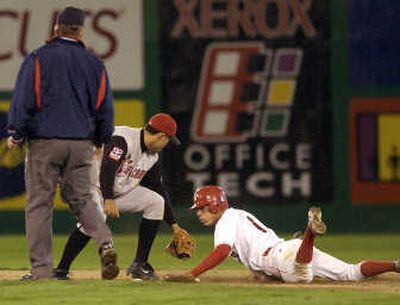Stolen base enjoys renaissance in MLB

When Jacoby Ellsbury first arrived in Boston’s minor league system in July 2005 as a 21-year-old, fleet-footed draftee from Oregon State, he was quickly indoctrinated into what was at the time the Red Sox Way.
“They told me they didn’t want me stealing much, that they weren’t real big on stolen bases,” Ellsbury said. “I guess that was just how the organization viewed things. With the guys they had in their lineup, they didn’t want to give away outs.”
That season, Boston finished 28th in the majors in stolen bases. The next year, it finished last. But in the minors, Ellsbury largely ignored his marching orders and kept running, stealing 41 bases in both 2006 and 2007, and when he made the majors last summer, he had earned the right to run.
“My success rate (in the minors) was good, so I kept on stealing bases,” Ellsbury said. “And from then on it’s never really been an issue. If you show them you can do it, they’re probably not going to stop you.”
Now in his first full big league season, Ellsbury is running Boston straight to the top of the stolen base leader board. Entering last weekend, thanks largely to Ellsbury’s 28 steals, they ranked second in the American League and tied for third in the majors.
Perhaps the Red Sox are an extreme example, but stolen bases are up significantly across the majors, continuing a trend that began in 2006, the first of three straight seasons with a leaguewide increase. After bottoming out in 2005 at 1.06 steals per game it seems the stolen base is enjoying a renaissance.
Two trends appear to be behind it. The first is the corresponding decline in offense from its historic peaks during the so-called Steroid Era, which made it unnecessary to use “small-ball” tactics that often give away outs. It is probably not a coincidence that the stolen-base rate began to rise not long after the institution of tougher drug testing in 2005 – although curiously, the adjustment in stolen base rates is a delayed reaction, coming two or three years after the corresponding rise or fall of offensive numbers.
The second trend is the widening influence of the sabermetrics movement, which has long understood the importance of conserving outs, and that the value of a base gained is far outweighed by the cost of an out lost.
The success rate, which generally has been on the rise for the past four decades, has surged in the 2000s, from 68.8 percent in 2000 to an all-time high of 74.4 percent last season.
The Washington Nationals’ Manny Acta is among the younger generation of managers who embrace the principles of sabermetrics. When he took over the Nats in 2007, they had given away the most outs in the majors (in terms of times caught stealing) the year before under steal-happy skipper Frank Robinson. Among Acta’s first messages to his new squad was: “No more haphazard base stealing.”